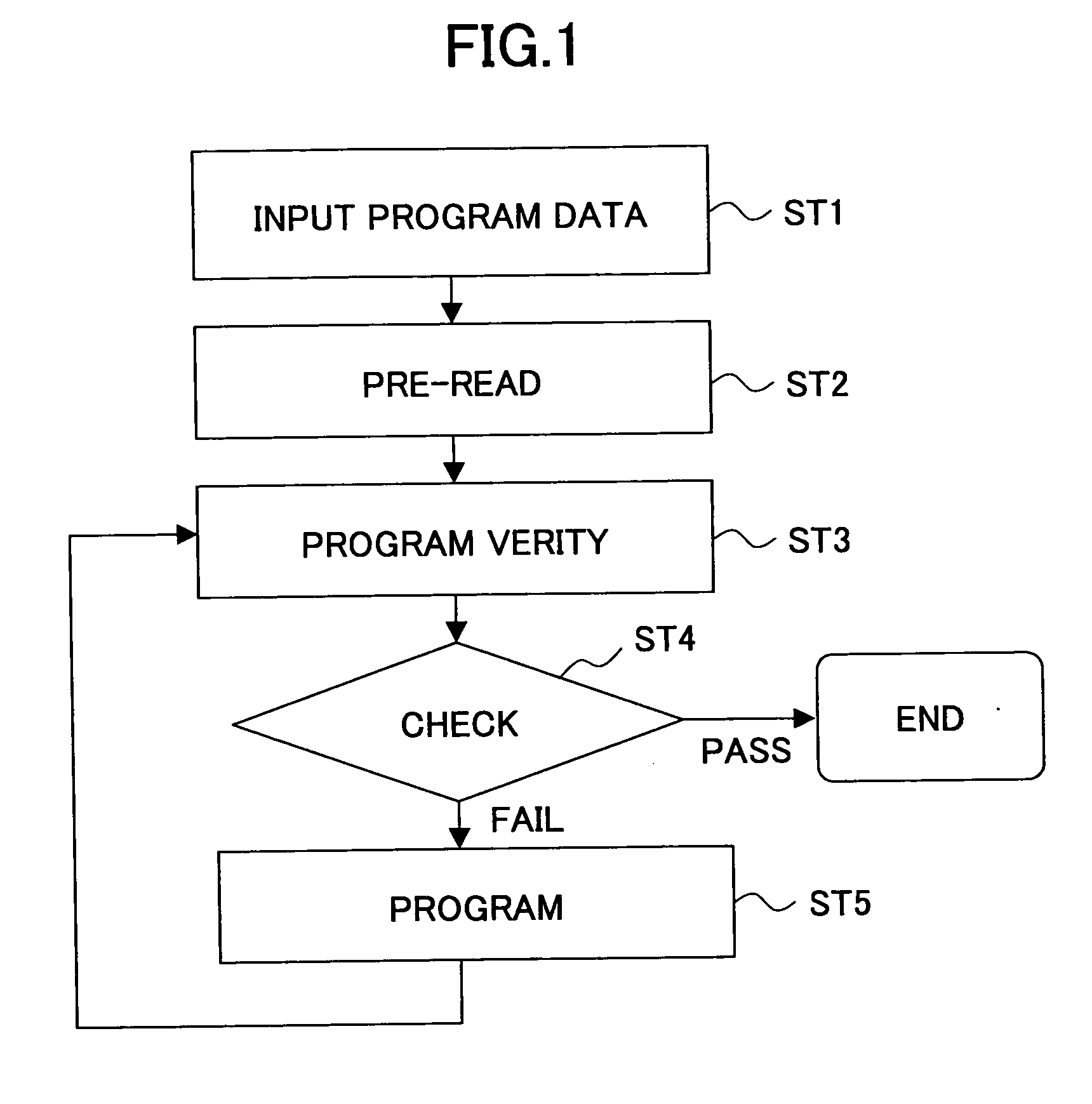Nonvolatile semiconductor memory device which stores two bits per memory cell
a semiconductor memory and memory cell technology, applied in static storage, digital storage, instruments, etc., can solve the problems of charge loss, reducing the threshold of the memory cells in the core circuit, and the inability to provide a sufficient read margin at the fixed threshold of the reference cell
- Summary
- Abstract
- Description
- Claims
- Application Information
AI Technical Summary
Benefits of technology
Problems solved by technology
Method used
Image
Examples
Embodiment Construction
[0029] In the following, embodiments of the present invention will be described with reference to the accompanying drawings.
[0030]FIG. 2 is a drawing showing the construction of a nonvolatile semiconductor memory device to which the present invention is applied.
[0031] A nonvolatile semiconductor memory device 110 of FIG. 2 includes a control circuit 111, an input / output buffer 112, an address latch 113, an X decoder 114, a Y decoder 115, a Y gate 115A, a cell array 116, a data latch 117, a program voltage generating circuit 118, an erase voltage generating circuit 119, and a chip-enable / output-enable circuit 120.
[0032] The control circuit 111 receives control signals from an exterior, and operates as a state machine based on the control signals, thereby controlling individual units of the nonvolatile semiconductor memory device 110.
[0033] The input / output buffer 112 receives data from the exterior, and supplies the data to the data latch 117. The address latch 113 receives and l...
PUM
 Login to View More
Login to View More Abstract
Description
Claims
Application Information
 Login to View More
Login to View More - R&D
- Intellectual Property
- Life Sciences
- Materials
- Tech Scout
- Unparalleled Data Quality
- Higher Quality Content
- 60% Fewer Hallucinations
Browse by: Latest US Patents, China's latest patents, Technical Efficacy Thesaurus, Application Domain, Technology Topic, Popular Technical Reports.
© 2025 PatSnap. All rights reserved.Legal|Privacy policy|Modern Slavery Act Transparency Statement|Sitemap|About US| Contact US: help@patsnap.com



